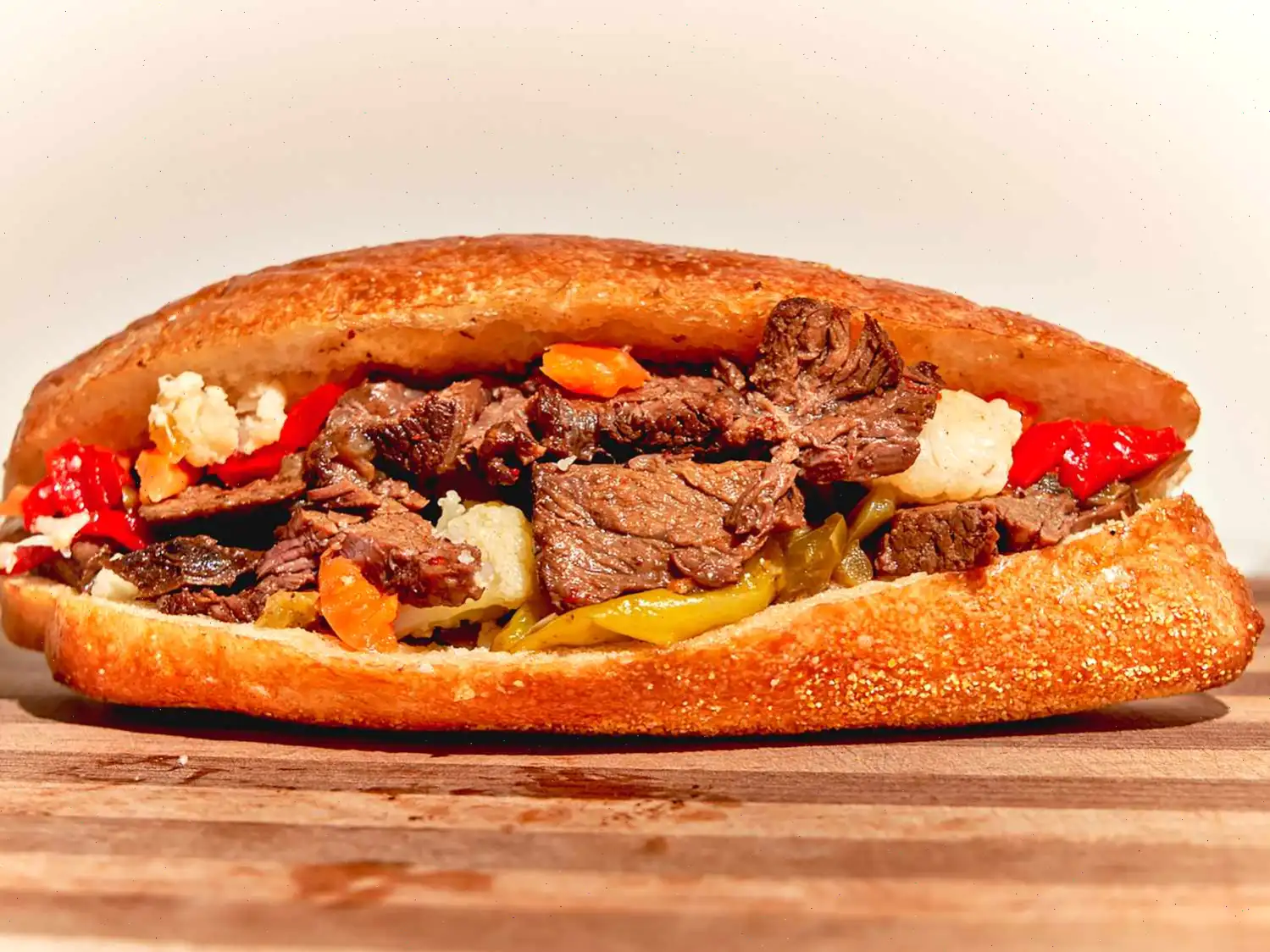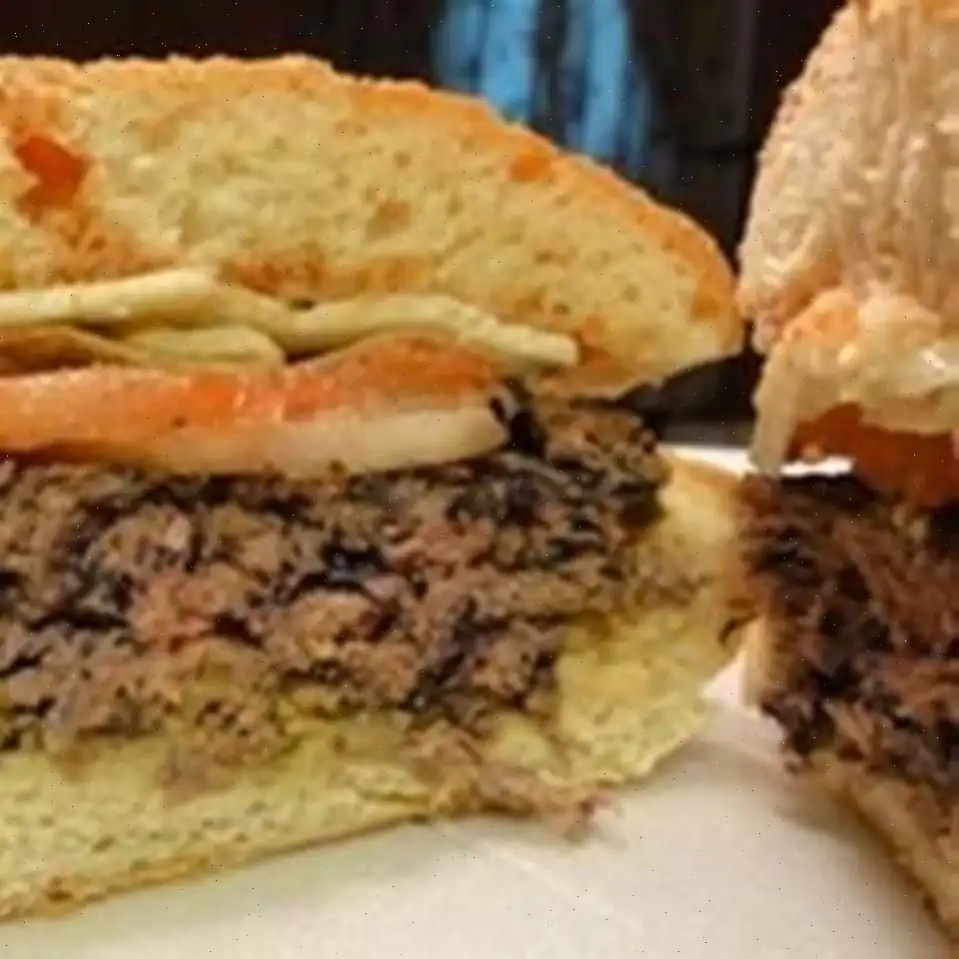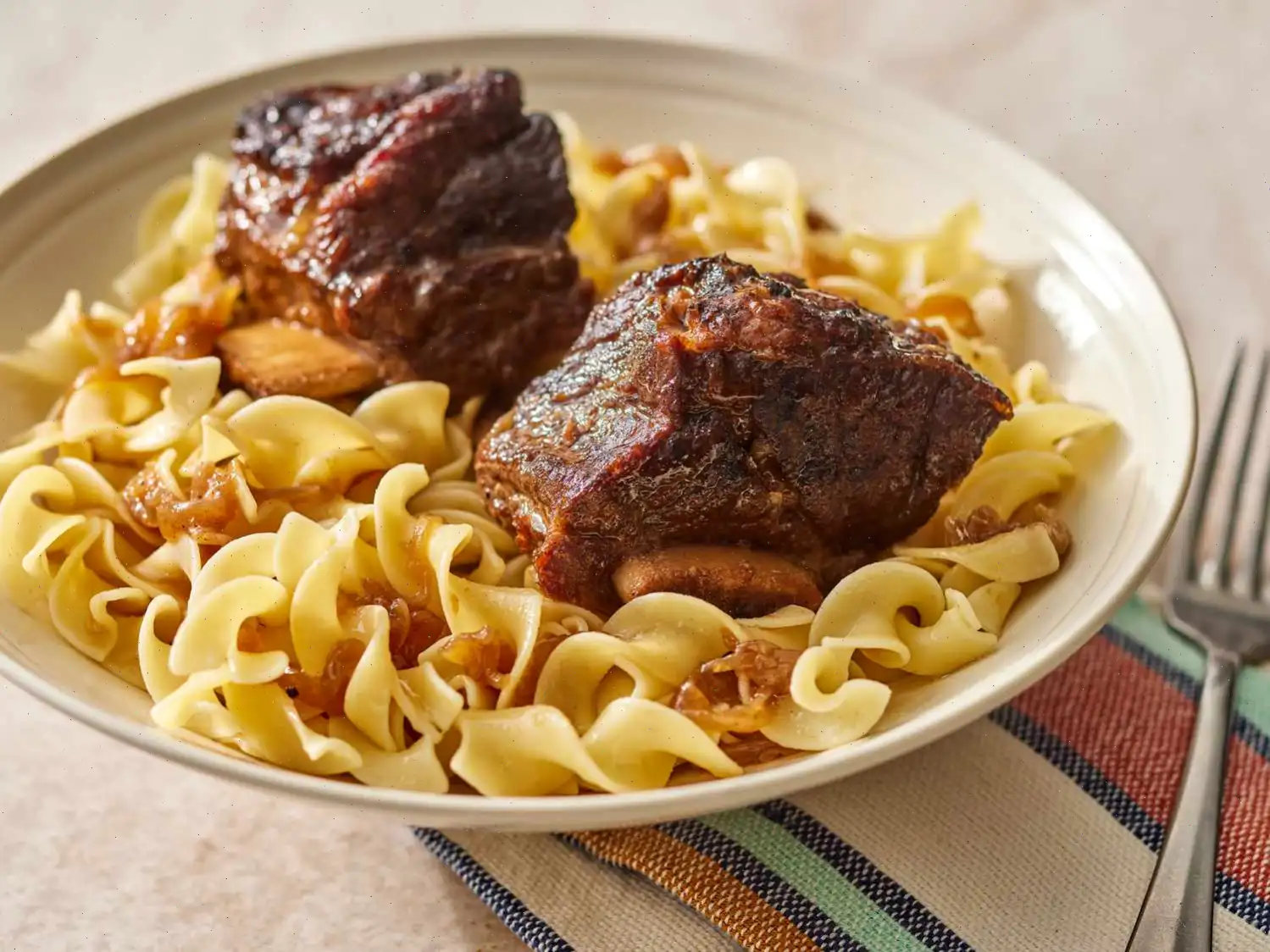
Instant Pot Chicago Beef Recipe
Ingredients
- 1 1/2 pounds boneless beef chuck
- 1 1/2 teaspoons salt, or to taste
- 1 teaspoon freshly ground black pepper
- 1 tablespoon dried oregano
- 1 teaspoon garlic powder, or to taste
- 1 tablespoon onion powder
- 1/4 teaspoon red pepper flakes (optional)
- 1 tablespoon paprika (optional)
- 1 tablespoon vegetable oil
- 1 onion, thickly sliced
- 6 cloves garlic, sliced
- 1 Fresno chile pepper
- 3 cups beef stock, divided
- 2 tablespoons sport pepper juice, or more to taste, or white vinegar
- 1 bay leaf (optional)
- 1 teaspoon dried thyme (optional)
- 4 to 6 Italian hoagie rolls, split
- 1/2 cup chopped giardiniera (pickled Italian vegetables)
Directions
Step 1: Season the beef with salt, black pepper, dried oregano, garlic powder, onion powder, red pepper flakes, and paprika. Mix well to ensure the beef is evenly coated with the seasonings.
Step 2: Set the Instant Pot to the High Saute setting and add vegetable oil. Once the oil is hot, add the seasoned beef and sear on both sides for 3 to 5 minutes, until browned. Remove the beef from the pot and set it aside.
Step 3: In the same pot, add sliced onion, garlic, and Fresno chile pepper. Saute for 2-3 minutes until the vegetables soften.
Step 4: Deglaze the pot with 2 cups of beef stock, scraping the bottom to release any browned bits. Add sport pepper juice (or white vinegar), bay leaf, and dried thyme, and stir well.
Step 5: Return the seared beef to the pot, placing it on top of the vegetable mixture. Close the lid, and cook on High Pressure for 4 minutes. Once the cooking time is done, set the Instant Pot to the Keep Warm setting and allow it to rest for 40 minutes.
Step 6: After 40 minutes, remove the beef from the pot and slice it thinly against the grain.
Step 7: Strain the braising liquid to remove the solids, then return the liquid and sliced beef back into the Instant Pot. Add the remaining 1 cup of beef stock and stir to combine.
Step 8: If desired, dip the inner face of the hoagie rolls in the braising liquid to soak up the flavor.
Step 9: Place the sliced beef inside the hoagie rolls and garnish with chopped giardiniera. Serve immediately and enjoy!
Nutrition Facts
Per serving (based on 4 servings):
- Calories: 795
- Total Fat: 21g (27% Daily Value)
- Saturated Fat: 6g (31% Daily Value)
- Cholesterol: 168mg (56% Daily Value)
- Sodium: 2020mg (88% Daily Value)
- Total Carbohydrate: 80g (29% Daily Value)
- Dietary Fiber: 7g (27% Daily Value)
- Total Sugars: 5g
- Protein: 72g (144% Daily Value)
- Vitamin C: 20mg (22% Daily Value)
- Calcium: 212mg (16% Daily Value)
- Iron: 11mg (59% Daily Value)
- Potassium: 1251mg (27% Daily Value)
Note: Percent Daily Values are based on a 2,000 calorie diet. Your daily values may be higher or lower depending on your calorie needs. Nutrient information is not available for all ingredients. If you have dietary restrictions, consult a registered dietitian before preparing this recipe.
History and Origins of Chicago-Style Beef
The Chicago beef sandwich, often referred to as "Italian beef," originated in the early 20th century among Italian immigrants in Chicago, Illinois. Seeking an affordable and flavorful meal, they slow-cooked tougher cuts of beef, usually chuck roast, and served them thinly sliced in a soft Italian roll. The sandwich quickly became popular among factory workers and laborers due to its hearty nature, bold flavors, and convenience. Over time, Italian beef became a defining dish of Chicago's culinary identity, celebrated for its savory, spiced meat and tangy accompaniments.
Regional Variations and Characteristics
While the core of the sandwicha slow-cooked, thinly sliced beefremains consistent, regional adaptations exist within Chicago itself. Some areas favor extra-hot giardiniera, a spicy pickled vegetable mix, while others emphasize the addition of sweet or mild peppers. The "dipped" style, where the hoagie roll is briefly immersed in the flavorful cooking broth, is a signature local touch, creating a moist and savory bite. These variations highlight how the same basic recipe can carry subtle differences that reflect neighborhood tastes and traditions.
Comparison with Similar Dishes
Italian beef differs from other beef sandwiches, such as Philly cheesesteaks or roast beef sandwiches, in several key ways. The meat is braised in seasoned broth rather than simply grilled or roasted, resulting in a tender texture with rich, layered flavors. Giardiniera or mild sweet peppers are commonly added, providing a tangy or spicy contrast that is rarely found in other regional sandwiches. Additionally, the dipping process distinguishes Chicago beef, producing a sandwich that is moist and intensely flavorful, setting it apart from drier variants found elsewhere.
Typical Serving and Presentation
Chicago beef sandwiches are commonly served in casual diners, sandwich shops, and at local festivals throughout Chicago. They are often accompanied by a side of fries or potato chips, and in some traditional eateries, the sandwich is presented "wet" with the roll dipped in the cooking juices. While home versions, like this Instant Pot adaptation, have become popular nationwide, enjoying an authentic Chicago beef sandwich in its city of origin remains a culinary experience tied to local culture and hospitality.
Interesting Facts and Trivia
The term Italian beef was popularized in the 1930s and has since become synonymous with Chicago street food. The sport pepper, a small, tangy chili, is considered a staple addition and is often described as Chicagos unofficial signature pepper. Another interesting fact is that many families guard their own proprietary spice blends for the broth, making each sandwich shops version unique. Annual festivals and competitions celebrate Italian beef, highlighting its enduring popularity and importance in Chicagos food heritage.
You can listen to this recipe in AI audio format. Simply click the play button below to listen to the content in a format that suits you best. It’s a great way to absorb information on the go!








